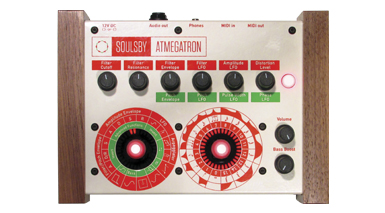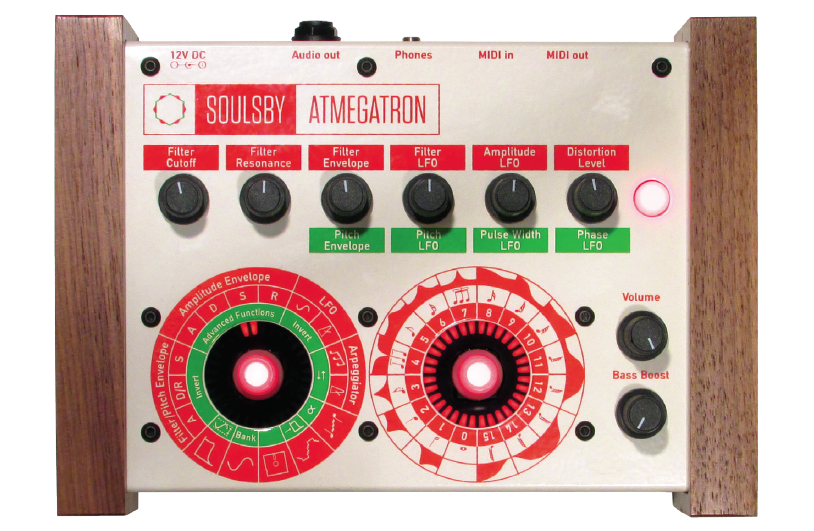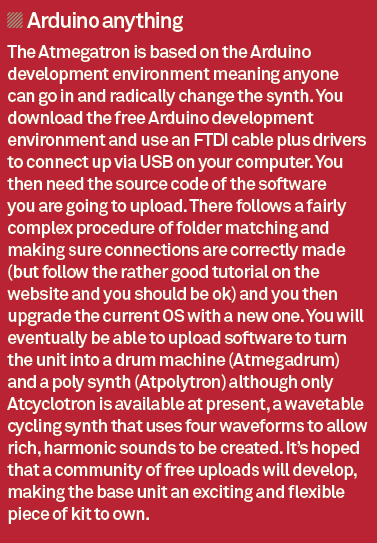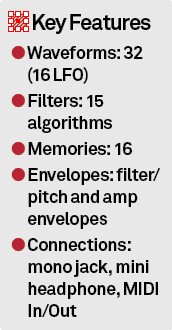SOULSBY Atmegatron Review
An 8-bit hardware synth that can be radically changed in software, is hand-built, and only costs £300. ‘Yes please,’ says Andy Jones in this review of the Soulsby Atmegatron. Details Price £306 +postage (£152 for PCB) Contact +44 7815 896371 info@soulsbysynths.com Web www.soulsbysynth.com Amazon.co.uk Widgets I love synths, I love home-grown stuff, I love flashing lights, I love […]

An 8-bit hardware synth that can be radically changed in software, is hand-built, and only costs £300. ‘Yes please,’ says Andy Jones in this review of the Soulsby Atmegatron.

Details
Price £306 +postage (£152 for PCB)
Contact +44 7815 896371
info@soulsbysynths.com
Web www.soulsbysynth.com
I love synths, I love home-grown stuff, I love flashing lights, I love retro stuff and I love the unusual. I should love the Soulsby Atmegatron then: a new monophonic, British, 8-bit digital wavetable synth… with flashing lights.
It’s simple in concept – 32 waveforms, eight rotaries, monophonic, MIDI, a couple of audio outs – but has been put together using the Arduino platform meaning it can be updated… by anyone. In fact this is positively encouraged: the by-line for Atmegatron is ‘Play/Program/Hack’ and with the latter in mind, you can buy it simply as a printed circuit board (for a shade over £152 plus postage). Soulsby describe this as “designed for software programmers and hackers – a developer product. Musicians wanting a synth for the studio or live should go for the complete kit.” So I’ve opted for the pre-built one to test. (Rest assured though, we’ll be looking more at the PCB in future issues of our DIY series.)
For £306 plus postage you get a – and I hate to use the word – cute box with end panels, plus two coloured rotaries that can be pressed to access their dual layers. The one on the left accesses the parameters while the one on the right accesses the level. So select the waveform bank on the left, and select the waveform number within that bank on the right. (It’s a simple but clever system that translates to just about every feature on the unit.) The right rotary has 16 increments which means 16 waveforms to choose from. However if you press the left rotary you get access to another layer of 16.

Patches are saved in flash memory and you can load and save your efforts via the disc icon. So if you find yourself having programmed a great sound (which will happen), just choose a location, press the left rotary for a couple of seconds and any changes will be stored. Press it briefly and it will load back anything saved in the flash memory. While you are limited to 16, you can use the synth’s library software to load and save more via your computer.
This software can also be used to add waveforms and filter types to the synth. You get 15 filter types on board (again choose the filter icon on the left, step through with the right) and these are listed graphically around the right hand rotary. Other familiar synth parameters are also listed around the left rotary (with adjustments to levels, you guessed it, made by the right) including pitch and amplitude envelopes, LFO and arpeggiator.
The LFO here is worth a mention as it’s where a lot of movement can be brought in to your occasionally sparse sound, and rates can be controlled by the right dial or it can be sync’d to any external MIDI signal.
While we’re on the subject of sound, it might just be 8-bit but this is part of the Atmegatron’s charm. Some of the distortion inherent with that has been removed within the circuitry and you do get a surprising amount of bass (ok there is a filter rotary to enhance this too) so the Atmegatron may surprise you with its potential.
But this increases massively with the unit’s ability to upload code via the Arduino platform that can change it into other synths or drum machines (see box below). And this is probably the most exciting aspect of the synth. While the current sounds are fine you might be more tempted to use it for electronic experimentation rather than composition, but if more people get behind it and develop for it, then owning an Atmegatron could mean you are part of a unique, geeky and exclusive sonic community. And let’s face it, we all want that don’t we?




